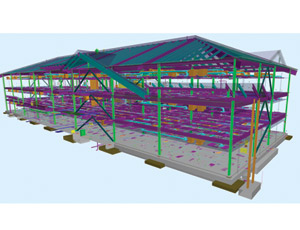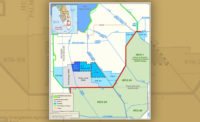Attendees of the Society of American Military Engineers' annual agency briefing burst into applause last month upon hearing the news the U.S. Army Corps of Engineers is moving to a platform-neutral approach to building information modeling software for its standardized building designs contracted through its Centers for Standardization.

Their delight may be short-lived. The Corps' apparent reversal of a policy that mandated use of only Bentley Systems Inc. software for BIM project models has a few more twists.
Each of the Centers for Standardization will choose which system it wants for an individual project based on what the models will be used for, says George Lea Jr., the Corps' chief of military branch engineering/construction. The district offices that manage the work always have had that flexibility. As for AEC firms wishing to vie for the centers' work, “they will need to read the contract,” Lea says.
While the Corps has used Bentley software for years, the Air Force has gone with Autodesk Revit. In fact, Autodesk recently announced a $26-million, five-year open contract with the Air Force for the software maker's entire suite of products. The Corps is the contracting agent for the majority of Air Force construction, so its contracts likely would specify Revit, Lea says. When the models are for reference and only for reading, Lea says, they will be platform-neutral. “Whatever they are, we'll specify [that] in contracts,” he says.
Some executives find that approach disturbing. One source, who requested anonymity, questions how AEC firms can form teams ahead of time for work they know is coming under the policy? If one team member has the wrong software, the team is in jeopardy. He says, “How do they expect us to play ‘Whack-a-BIM' and see what pops up with every request for proposal?”
Ron Brown, CEO of R.B. Brown Consulting LLC, Scottsdale, Ariz., sees the issue in a different light. “If the Corps can be selective in that context, it somewhat waters down what industry is trying to do, which is to make it neutral for everyone.” But overall, he still sees the Corps' move as positive.
Chilling Effect
Brown, a recently retired senior vice president at Sundt Construction, Tempe, Ariz., is the former chairman of the Associated General Contractors' government affairs committee. AGC has lobbied the Corps to become platform-neutral. “This is the first shot at trying to accommodate industry,” he says, noting that the policy change will allow the agency “to bring [the centers and district offices] to where they accept the neutral platform.”
Craig Thomas, senior CAD-BIM manager for Omaha-based Leo A Daly, says the Bentley-only mandate has had a chilling effect on competition for Corps projects. The firm only supports both platforms in one office. “[The agency] was limiting itself to the number and quality of architect and engineer competitors,” he says. About 30% of designers worldwide use BIM, says Jay Bhatt, Autodesk senior vice president of AEC Solutions.

LEA
Patrick A. Burns, VP of Mortenson Construction and a retired Air Force general and civil engineer of its Air Combat Command, says the Corps should seek to boost BIM to manage conflict resolution in design and construction sequencing and not just for building management.
Autodesk and Bentley are edging toward more software interoperability. Each system can now view the other's BIM models. “I can traverse models, but as far as translating the BIM aspect, it's a little more difficult,” says Edward Lick, who manages design systems support for STV Inc., Douglasville, Pa.
Bentley is putting a positive spin on the Corps' move. “We think it will continue to motivate everyone in the industry to keep striving toward that interoperability,” says Huw Roberts, the vendor's global marketing director for buildings and structural engineering.
Military contractors are optimistic they will have a say in determining which platform is best for a project, regardless of the owner. “Flexibility to work in either system is more efficient,” says James Vilbert, STV senior VP. Mike DiNapoli, vice president and general manager of Suffolk Construction, Falls Church, Va., says, “I'm sure the Corps will see the designers be more responsive with the product as well as the timeline.”


Post a comment to this article
Report Abusive Comment